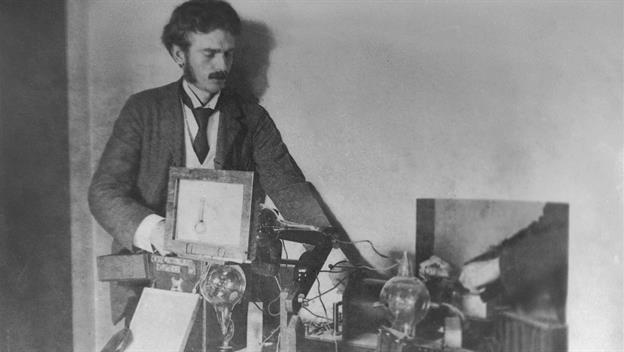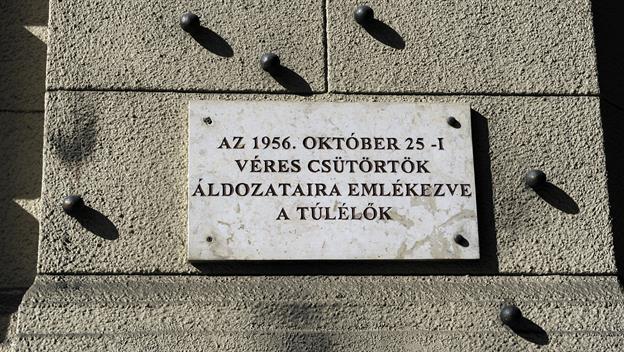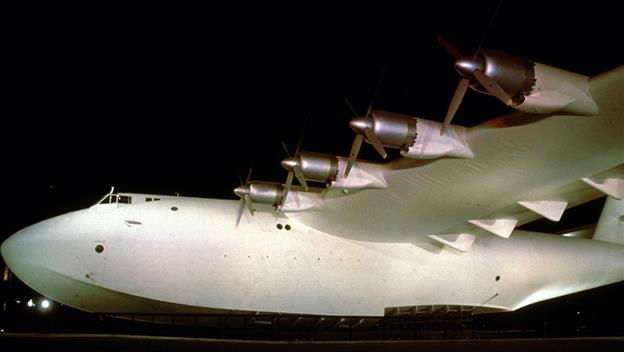1938
Nazis launch Kristallnacht
On this day in 1938, in an event that would foreshadow the
Holocaust, German Nazis launch a campaign of terror against Jewish
people and their homes and businesses in Germany and Austria. The
violence, which continued through November 10 and was later dubbed
“Kristallnacht,” or “Night of Broken Glass,” after the countless smashed
windows of Jewish-owned establishments, left approximately 100 Jews
dead, 7,500 Jewish businesses damaged and hundreds of synagogues, homes,
schools and graveyards vandalized. An estimated 30,000 Jewish men were
arrested, many of whom were then sent to concentration camps for several
months; they were released when they promised to leave Germany.
Kristallnacht represented a dramatic escalation of the campaign started
by Adolf Hitler in 1933 when he became chancellor to purge Germany of
its Jewish population.
The Nazis used the murder of a low-level German diplomat in Paris by a
17-year-old Polish Jew as an excuse to carry out the Kristallnacht
attacks. On November 7, 1938, Ernst vom Rath was shot outside the German
embassy by Herschel Grynszpan, who wanted revenge for his parents’
sudden deportation from Germany to Poland, along with tens of thousands
of other Polish Jews. Following vom Rath’s death, Nazi propaganda
minister Joseph Goebbels ordered German storm troopers to carry out
violent riots disguised as “spontaneous demonstrations” against Jewish
citizens. Local police and fire departments were told not to interfere.
In the face of all the devastation, some Jews, including entire
families, committed suicide.
In the aftermath of Kristallnacht, the Nazis blamed the Jews and
fined them 1 billion marks (or $400 million in 1938 dollars) for vom
Rath’s death. As repayment, the government seized Jewish property and
kept insurance money owed to Jewish people. In its quest to create a
master Aryan race, the Nazi government enacted further discriminatory
policies that essentially excluded Jews from all aspects of public life.
Over 100,000 Jews fled Germany for other countries after
Kristallnacht. The international community was outraged by the violent
events of November 9 and 10. Some countries broke off diplomatic
relations in protest, but the Nazis suffered no serious consequences,
leading them to believe they could get away with the mass murder that
was the Holocaust, in which an estimated 6 million European Jews died.

1895
German scientist discovers X-rays
On this day in 1895, physicist Wilhelm Conrad Rontgen
(1845-1923) becomes the first person to observe X-rays, a significant
scientific advancement that would ultimately benefit a variety of
fields, most of all medicine, by making the invisible visible. Rontgen’s
discovery occurred accidentally in his Wurzburg, Germany, lab, where he
was testing whether cathode rays could pass through glass when he
noticed a glow coming from a nearby chemically coated screen. He dubbed
the rays that caused this glow X-rays because of their unknown nature.
X-rays are electromagnetic energy waves that act similarly to light
rays, but at wavelengths approximately 1,000 times shorter than those of
light. Rontgen holed up in his lab and conducted a series of
experiments to better understand his discovery. He learned that X-rays
penetrate human flesh but not higher-density substances such as bone or
lead and that they can be photographed.
Rontgen’s discovery was labeled a medical miracle and X-rays soon
became an important diagnostic tool in medicine, allowing doctors to see
inside the human body for the first time without surgery. In 1897,
X-rays were first used on a military battlefield, during the Balkan War,
to find bullets and broken bones inside patients.
Scientists were quick to realize the benefits of X-rays, but slower
to comprehend the harmful effects of radiation. Initially, it was
believed X-rays passed through flesh as harmlessly as light. However,
within several years, researchers began to report cases of burns and
skin damage after exposure to X-rays, and in 1904, Thomas Edison’s
assistant, Clarence Dally, who had worked extensively with X-rays, died
of skin cancer. Dally’s death caused some scientists to begin taking the
risks of radiation more seriously, but they still weren’t fully
understood. During the 1930s, 40s and 50s, in fact, many American shoe
stores featured shoe-fitting fluoroscopes that used to X-rays to enable
customers to see the bones in their feet; it wasn’t until the 1950s that
this practice was determined to be risky business. Wilhelm Rontgen
received numerous accolades for his work, including the first Nobel
Prize in physics in 1901, yet he remained modest and never tried to
patent his discovery. Today, X-ray technology is widely used in
medicine, material analysis and devices such as airport security
scanners.

1956
Soviets put brutal end to Hungarian revolution
A spontaneous national uprising that began 12 days before in
Hungary is viciously crushed by Soviet tanks and troops on this day in
1956. Thousands were killed and wounded and nearly a quarter-million
Hungarians fled the country.
The problems in Hungary began in October 1956, when thousands of
protesters took to the streets demanding a more democratic political
system and freedom from Soviet oppression. In response, Communist Party
officials appointed Imre Nagy, a former premier who had been dismissed
from the party for his criticisms of Stalinist policies, as the new
premier. Nagy tried to restore peace and asked the Soviets to withdraw
their troops. The Soviets did so, but Nagy then tried to push the
Hungarian revolt forward by abolishing one-party rule. He also announced
that Hungary was withdrawing from the Warsaw Pact (the Soviet bloc’s
equivalent of NATO).
On November 4, 1956, Soviet tanks rolled into Budapest to crush, once
and for all, the national uprising. Vicious street fighting broke out,
but the Soviets’ great power ensured victory. At 5:20 a.m., Hungarian
Prime Minister Imre Nagy announced the invasion to the nation in a grim,
35-second broadcast, declaring: “Our troops are fighting. The
Government is in place.” Within hours, though, Nagy sought asylum at the
Yugoslav Embassy in Budapest. He was captured shortly thereafter and
executed two years later. Nagy’s former colleague and imminent
replacement, János Kádár, who had been flown secretly from Moscow to the
city of Szolnok, 60 miles southeast of the capital, prepared to take
power with Moscow’s backing.
The Soviet action stunned many people in the West. Soviet leader
Nikita Khrushchev had pledged a retreat from the Stalinist policies and
repression of the past, but the violent actions in Budapest suggested
otherwise. An estimated 2,500 Hungarians died and 200,000 more fled as
refugees. Sporadic armed resistance, strikes and mass arrests continued
for months thereafter, causing substantial economic disruption.
Inaction on the part of the United States angered and frustrated many
Hungarians. Voice of America radio broadcasts and speeches by President
Dwight D. Eisenhower and Secretary of State John Foster Dulles had
recently suggested that the United States supported the “liberation” of
“captive peoples” in communist nations. Yet, as Soviet tanks bore down
on the protesters, the United States did nothing beyond issuing public
statements of sympathy for their plight.

1947
Spruce Goose flies
The Hughes Flying Boat—the largest aircraft ever built—is
piloted by designer Howard Hughes on its first and only flight. Built
with laminated birch and spruce, the massive wooden aircraft had a
wingspan longer than a football field and was designed to carry more
than 700 men to battle.
Howard Hughes was a successful Hollywood movie producer when he
founded the Hughes Aircraft Company in 1932. He personally tested
cutting-edge aircraft of his own design and in 1937 broke the
transcontinental flight-time record. In 1938, he flew around the world
in a record three days, 19 hours, and 14 minutes.
Following the U.S. entrance into World War II in 1941, the U.S.
government commissioned the Hughes Aircraft Company to build a large
flying boat capable of carrying men and materials over long distances.
The concept for what would become the “Spruce Goose” was originally
conceived by the industrialist Henry Kaiser, but Kaiser dropped out of
the project early, leaving Hughes and his small team to make the H-4
a reality. Because of wartime restrictions on steel, Hughes decided to
build his aircraft out of wood laminated with plastic and covered with
fabric. Although it was constructed mainly of birch, the use of spruce
(along with its white-gray color) would later earn the aircraft the
nickname Spruce Goose. It had a wingspan of 320 feet and was powered by
eight giant propeller engines.
Development of the Spruce Goose cost a phenomenal $23 million and
took so long that the war had ended by the time of its completion in
1946. The aircraft had many detractors, and Congress demanded that
Hughes prove the plane airworthy. On November 2, 1947, Hughes obliged,
taking the H-4 prototype out into Long Beach Harbor, CA for an
unannounced flight test. Thousands of onlookers had come to watch the
aircraft taxi on the water and were surprised when Hughes lifted his
wooden behemoth 70 feet above the water and flew for a mile before
landing.
Despite its successful maiden flight, the Spruce Goose never went
into production, primarily because critics alleged that its wooden
framework was insufficient to support its weight during long flights.
Nevertheless, Howard Hughes, who became increasingly eccentric and
withdrawn after 1950, refused to neglect what he saw as his greatest
achievement in the aviation field. From 1947 until his death in 1976, he
kept the Spruce Goose prototype ready for flight in an enormous,
climate-controlled hangar at a cost of $1 million per year. Today, the
Spruce Goose is housed at the Evergreen Aviation Museum in McMinnville,
Oregon.






